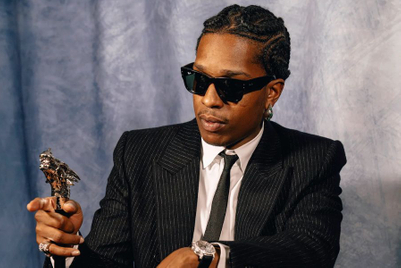
China has become the most important luxury market in the world. Some analysts attribute up to 40% of global luxury sales to Chinese consumers inside and outside of China, with a recent growth rate of 20% overall for the luxury sector. If the consumers of one country are responsible for almost half of the world’s luxury sales, companies should listen. But there’s more: No other major country has as many young consumers ad China does, and no other country is more digital. Looking at consumers in Hong Kong, Beijing, Shanghai, or Guangzhou, you can see the future: They are digital natives who want instant gratification and demand the best.
Most Western brands are not prepared
This future will necessitate a shift that most luxury brands aren’t prepared for. Many managers are convinced that older, more experienced consumers are their demanding customers while thinking it’s okay to neglect young consumers because they have no money and low expectations. These stereotypes are wrong on every front, and they offer big opportunities for luxury disruptors. If brands—whether they offer products, services, or both—don’t take young Chinese millennials seriously and don’t “wow” them with their offerings, they will be out of business fast.
Even major luxury brands get it wrong
Some have said that perception is the reality, but perception is an illusion unless it’s backed by data. When trying to optimize traffic in one of their Asian flagship stores, a successful luxury fashion brand offered me about ten reasons why their store wasn’t profitable. But instead of listening to the brand, we scanned any conversation we could find about them and their primary competition on social media, blogs, and elsewhere. This was done with sophisticated A.I. listening engines, and the results were then analyzed—and revealing!
The top managers’ perceptions of the brand were completely wrong. The true issue was an inability to connect with Asian consumers, and their competitors, including some they did not see as important, were hijacking consumers simply by providing more relevant content. Hence, consumers didn’t go to the store because they were going to competing brands instead. In the end, it was not a problem with the store but a branding issue.
The belief that millennials and especially GenZ are a fad because they have no money is a major misconception!
In China, more than 80% of luxury purchases are done by millennials and GenZ, worldwide close to 40%. Those numbers contradict the belief of many that younger consumers have no money. Besides, the world’s most successful luxury fashion brand in the last years, Gucci, is the luxury brand that has the highest affinity with young consumers.
Brands must question everything—even more so if a brand is successful
When a brand is successful, it’s at its most vulnerable because that’s when they get complacent by simply continuing what had made the brand successful. With rapidly changing trends and consumer expectations, doing the same over and over will guarantee failure. Luxury brands need to create unique experiences. Most of them forget this, especially when they are successful. By definition, a unique experience cannot be repeated, hence, the secret of luxury is the art of perpetual surprise. This is why, when brands are audited, everything needs to be challenged to identify gaps and opportunities.
Luxury brands are not focusing enough on brand equity
Recently, the marketing director of a fashion brand’s Chinese management team told me that her impression was that all Western brands do the same things in China. It’s true, many brands will focus on new product launches, campaigns, and fashion shows and events. What they forget to do, alas, is give consumers a reason to buy their specific brand.
Very few brands tell their story right, and even fewer are excellent in providing a “branded experience” along all touchpoints of the customer journey. One inconsistency can end a brand’s relationship with a customer. And in luxury, the stakes for brands are much higher, especially when it comes to younger consumers. If those consumers feel cheated by a negative experience or become bored because they aren’t surprised anymore, they will move on. This is why relying on internal perception is so dangerous.
Customer perception is reality. And this is why excellence in luxury brand equity definition and execution is not optional—it’s a must. And with most luxury brands currently losing money in China, the time to act is now.
Daniel Langer is CEO of the luxury, lifestyle and consumer brand strategy firm Équité. He consults some of the leading luxury brands in the world, is the author of several luxury management books, a regular keynote speaker, and holds management seminars in Europe, the USA, and Asia. Follow @drlanger.



.jpg&h=334&w=500&q=100&v=20250320&c=1)

.jpg&h=334&w=500&q=100&v=20250320&c=1)

.jpg&h=334&w=500&q=100&v=20250320&c=1)


.jpg&h=334&w=500&q=100&v=20250320&c=1)
.jpg&h=334&w=500&q=100&v=20250320&c=1)
.jpg&h=334&w=500&q=100&v=20250320&c=1)



.jpg&h=268&w=401&q=100&v=20250320&c=1)
+(900+x+600+px)+(4).png&h=268&w=401&q=100&v=20250320&c=1)
.png&h=268&w=401&q=100&v=20250320&c=1)
+(900+x+600+px)+(3).png&h=268&w=401&q=100&v=20250320&c=1)
+(900+x+600+px)+(1).png&h=268&w=401&q=100&v=20250320&c=1)